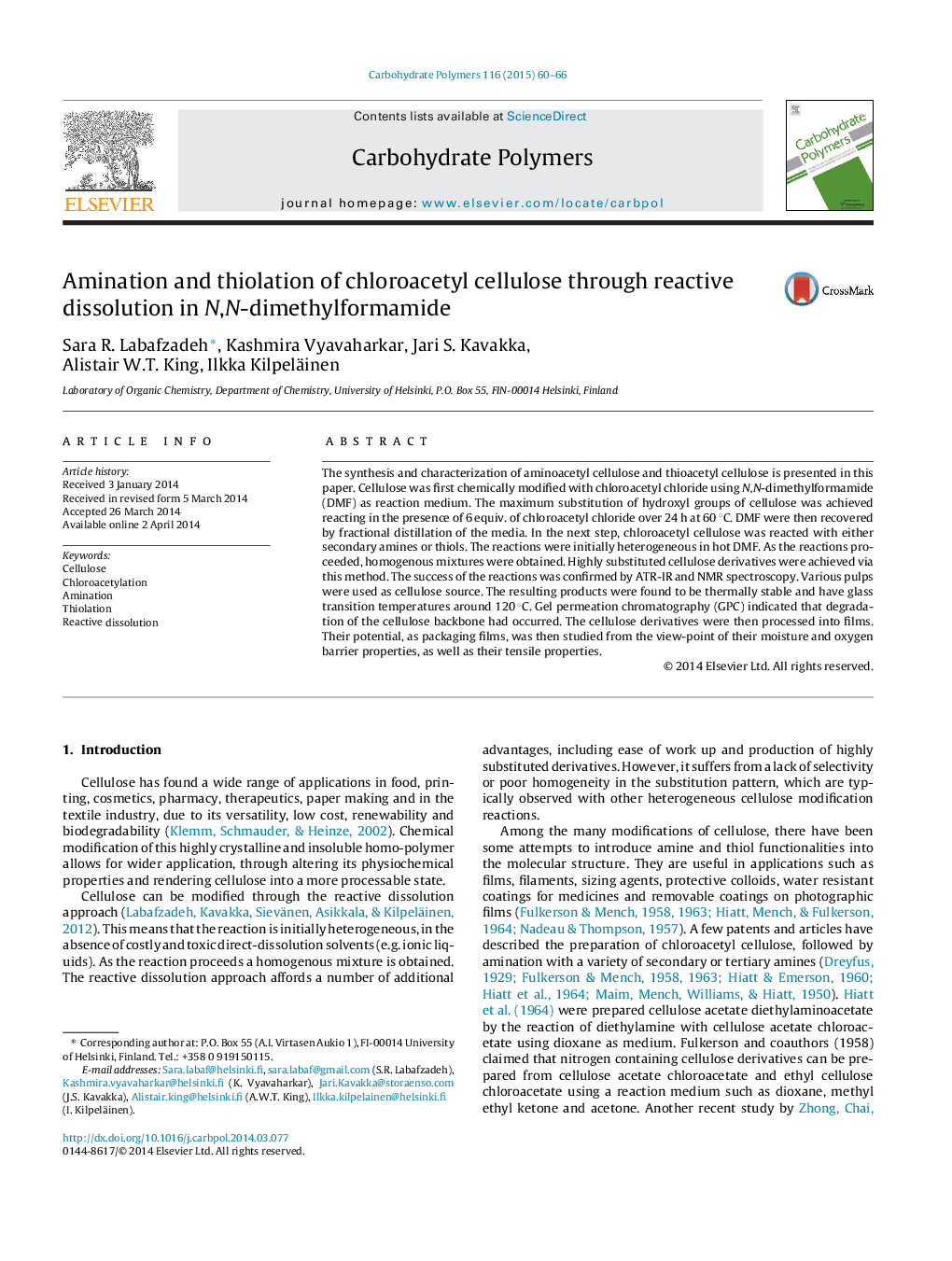| Article ID | Journal | Published Year | Pages | File Type |
|---|---|---|---|---|
| 1385666 | Carbohydrate Polymers | 2015 | 7 Pages |
•Highly substituted aminoacetyl and thioacetyl cellulose were prepared.•Cellulose derivatives were synthesized through reactive dissolution in DMF.•By using DMF alone as swelling media, the reaction should be more sustainable.•Pulps are good raw materials for the preparation of these acetyl celluloses.•Thermal properties of the products were improved over previous reports.
The synthesis and characterization of aminoacetyl cellulose and thioacetyl cellulose is presented in this paper. Cellulose was first chemically modified with chloroacetyl chloride using N,N-dimethylformamide (DMF) as reaction medium. The maximum substitution of hydroxyl groups of cellulose was achieved reacting in the presence of 6 equiv. of chloroacetyl chloride over 24 h at 60 °C. DMF were then recovered by fractional distillation of the media. In the next step, chloroacetyl cellulose was reacted with either secondary amines or thiols. The reactions were initially heterogeneous in hot DMF. As the reactions proceeded, homogenous mixtures were obtained. Highly substituted cellulose derivatives were achieved via this method. The success of the reactions was confirmed by ATR-IR and NMR spectroscopy. Various pulps were used as cellulose source. The resulting products were found to be thermally stable and have glass transition temperatures around 120 °C. Gel permeation chromatography (GPC) indicated that degradation of the cellulose backbone had occurred. The cellulose derivatives were then processed into films. Their potential, as packaging films, was then studied from the view-point of their moisture and oxygen barrier properties, as well as their tensile properties.
